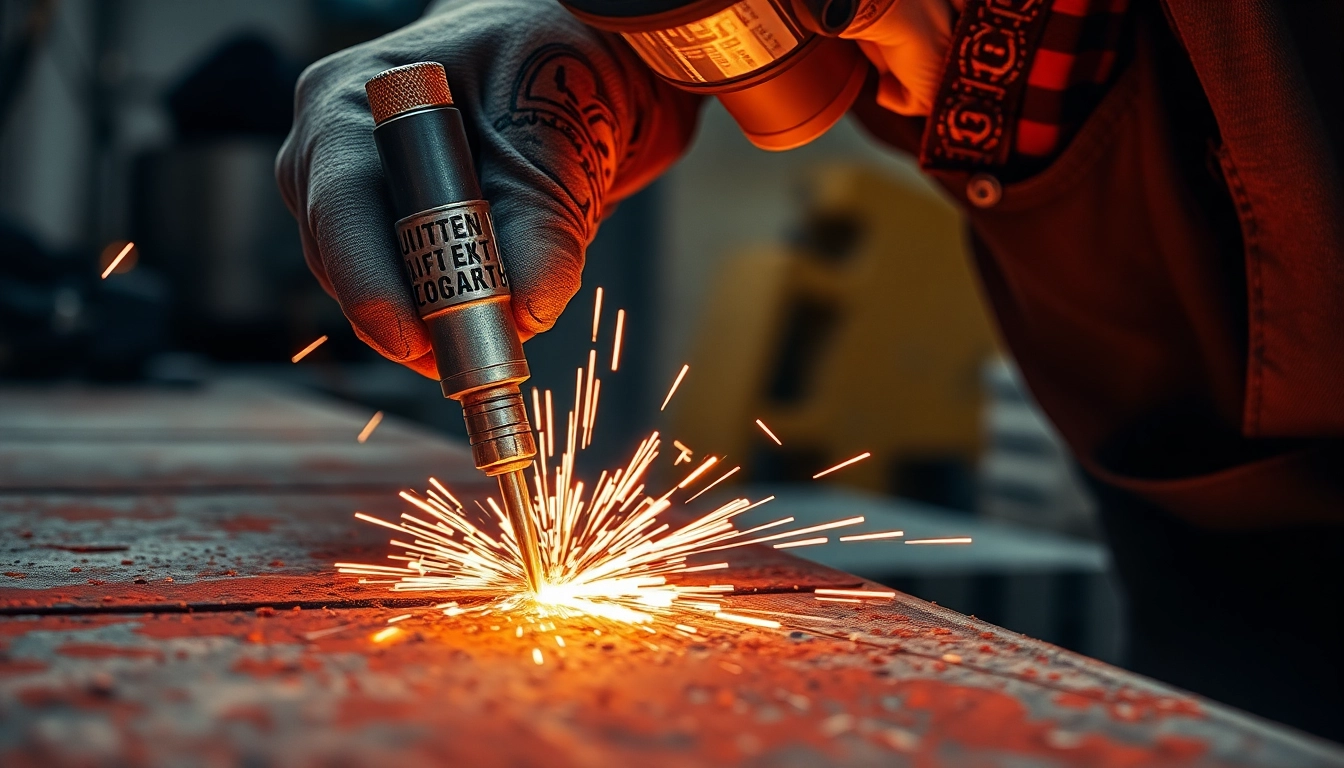
Understanding Needle Guns: What They Are and How They Work
Definition and History of the Needle Gun
A needle gun, also known as a needle scaler, is an industrial tool utilized primarily for surface preparation. Its design comprises a series of rapidly moving steel needles that strike the surface with high frequency, effectively removing rust, paint, and various other contaminants from metal surfaces. Historically, the concept of needle guns dates back to the 19th century, with early iterations primarily used in military applications as weapons, such as the Dreyse needle gun, which was notable for its unique firing mechanism. Over time, this technology evolved, leading to the modern versions we see today, which have found their place in various industries.
How Needle Guns Function in Surface Preparation
Needle guns operate on a straightforward yet effective principle of pneumatically powered action. When activated, a stream of compressed air powers the tool, causing the needles to vibrate at high speeds, usually measured in beats per minute (BPM). This vibration generates a hammering effect that allows the needles to penetrate through layers of rust and paint, dislodging debris with each impact. As the needles strike the surface, they create a dynamic action that can reach hard-to-tackle areas and conform closely to uneven surfaces, ensuring a deep clean that manual methods cannot achieve.
Variations of Needle Guns: Air vs. Electric Models
Today, needle guns are available in two primary types: pneumatic (air-powered) and electric models. pneumatic needle guns are typically favored for their robust performance and ability to handle heavier tasks, often requiring a specific airflow (measured in CFM – cubic feet per minute) to operate efficiently. In contrast, electric needle guns tend to offer more convenience and are often lighter, making them suitable for smaller projects or applications where power availability is limited. The choice between air and electric needle guns depends largely on the project requirements, budget, and personal preference when it comes to handling and maintenance.
Common Applications for Needle Guns in Industry
Rust and Paint Removal in Metalworking
One of the most prevalent applications of needle guns is in removing rust and paint from metal surfaces. In industrial settings, where metal components are frequently subjected to harsh environmental conditions, maintaining surface integrity through regular cleaning is crucial. Needle guns efficiently eliminate layers of rust or paint without damaging the underlying metal, which is pivotal for extending the life of machinery and equipment. Their high speed and precision ensure that even the toughest coatings can be effectively dealt with, making them indispensable in the metalworking industry.
Automotive Repairs: Restoring Vehicle Surfaces
In the automotive repair sector, needle guns serve as essential tools for restoring vehicle surfaces. Whether it’s prepping a body panel for repainting or cleaning rust from undercarriage components, needle guns allow for thorough cleaning that prepares surfaces for further work. For automotive technicians, the speed and effectiveness of needle guns mean reduced labor costs and time, allowing for faster turnaround in repair jobs. Furthermore, as vehicles become more sophisticated, the ability to clean and restore surfaces without extensive disassembly is an invaluable advantage.
Home Improvement Projects: DIY Uses for Needle Guns
Beyond professional applications, DIY enthusiasts are increasingly recognizing the benefits of needle guns in home improvement projects. Whether tackling a rusted patio set or preparing metal railings for painting, these tools become exceptionally handy for homeowners looking to revive old fixtures. Their capability to remove layers of grime and old paint facilitates straightforward renovations and enhances the overall aesthetic appeal of metal components around the house.
Choosing the Right Needle Gun for Your Needs
Factors to Consider: Size, Power, and Type
When selecting a needle gun, several factors come into play to ensure you choose the right tool for your specific needs. Firstly, consider the size of the project; for substantial industrial applications, a larger and more powerful pneumatic model may be warranted, whereas a compact electric needle gun could be more suitable for smaller tasks. The power of the needle gun, often measured in BPM and air pressure requirements (typically expressed in PSI), will also determine its effectiveness against tougher jobs.
Top Brands and Models in the Market
The market is filled with several reputable brands offering various needle guns with diverse features. Prominent manufacturers include Ingersoll Rand, DEWALT, and Trelawny, known for producing reliable and high-performance needle guns that cater to both professional and DIY markets. Each brand provides distinct models with specific features aimed at optimizing performance for different applications, from heavy-duty industrial use to light household tasks.
Budgeting: What to Expect in Pricing
The price of needle guns varies significantly based on the model type and features. On average, pneumatic systems tend to be pricier due to their robust capabilities, with costs ranging from $100 to $500 or more. Electric models are generally more affordable, often found within the $50 to $300 range. Understanding your budget helps narrow down selections and achieve the best value for your specific application without overspending.
Best Practices for Using a Needle Gun Safely and Effectively
Safety Gear and Precautions
Using a needle gun involves certain risks, primarily due to the high-speed movement of the needles and the force generated during operation. It is imperative to wear appropriate safety gear, including goggles to protect your eyes from debris, gloves to shield your hands, and a face mask to prevent inhalation of hazardous materials. Furthermore, ensuring a well-ventilated work space minimizes exposure to dust and fumes that can be released during usage.
Proper Techniques for Maximum Efficiency
To achieve optimal results when using a needle gun, employing the right techniques is fundamental. Begin by adjusting the air pressure and speed settings according to the surface condition. Utilize consistent, sweeping motions to cover larger areas effectively, and take your time with tougher patches that require focused attention. Regularly changing the position of the tool will prevent uneven wear of the needles and enhance their longevity.
Maintaining Your Needle Gun for Longevity
Regular maintenance is essential for ensuring the longevity of your needle gun. This includes cleaning debris from the needles and casing after every use, lubricating moving parts to ensure smooth action, and checking for wear or damage regularly. By establishing a maintenance routine, users can prolong the life of their tools significantly and minimize unexpected breakdowns or malfunctions during use.
Performance Metrics: Measuring the Effectiveness of Needle Guns
Understanding CFM Requirements and Power Output
The efficiency of a needle gun can be captured through key metrics such as CFM and BPM. CFM denotes the volume of air needed to operate the tool effectively and varies depending on the model and its intended application. Understanding a specific needle gun’s power output allows users to gauge its potential effectiveness and suitability for various tasks. Selecting a needle gun that meets the CFM requirements of your air compressor is crucial for sustained performance.
Evaluating Results: Visual and Quality Improvements
Evaluating the effectiveness of needle guns includes examining the quality of surface preparation achieved. Post-cleaning, surfaces should exhibit minimal rust and contaminants, leading to a conducive environment for further treatment, whether painting, welding, or other applications. A successful needle gun operation should yield visually appealing and structurally sound surfaces free from imperfections.
Feedback from Professionals: User Experiences
Insights from professionals who regularly use needle guns provide valuable information regarding their effectiveness and reliability. Many users report significant time savings compared to traditional methods, appreciating the tools’ ability to handle difficult cleaning tasks with ease. Additionally, user testimonials often highlight how investing in quality needle guns pays off in performance and results, leading to professional-grade finishes in various applications.





